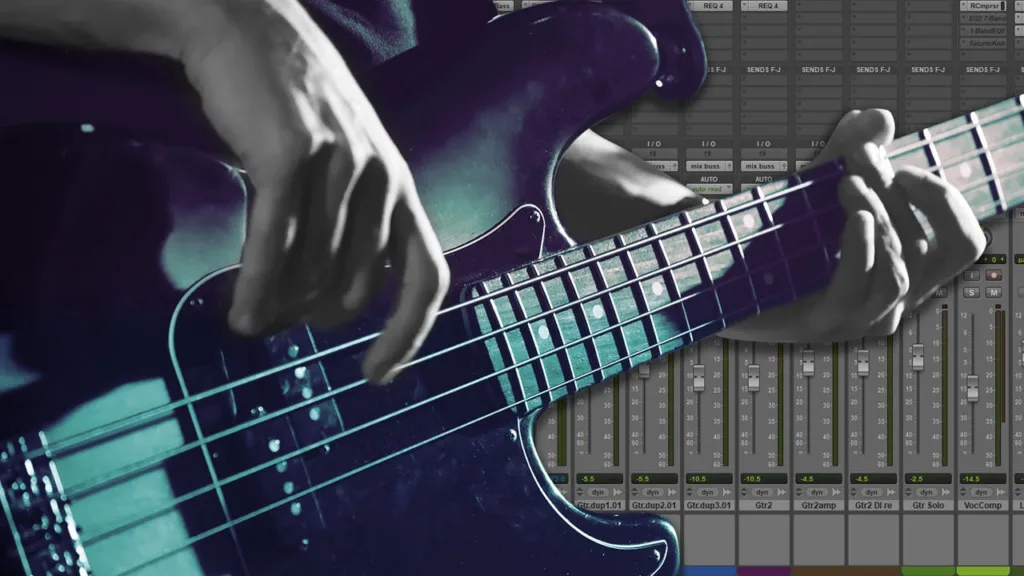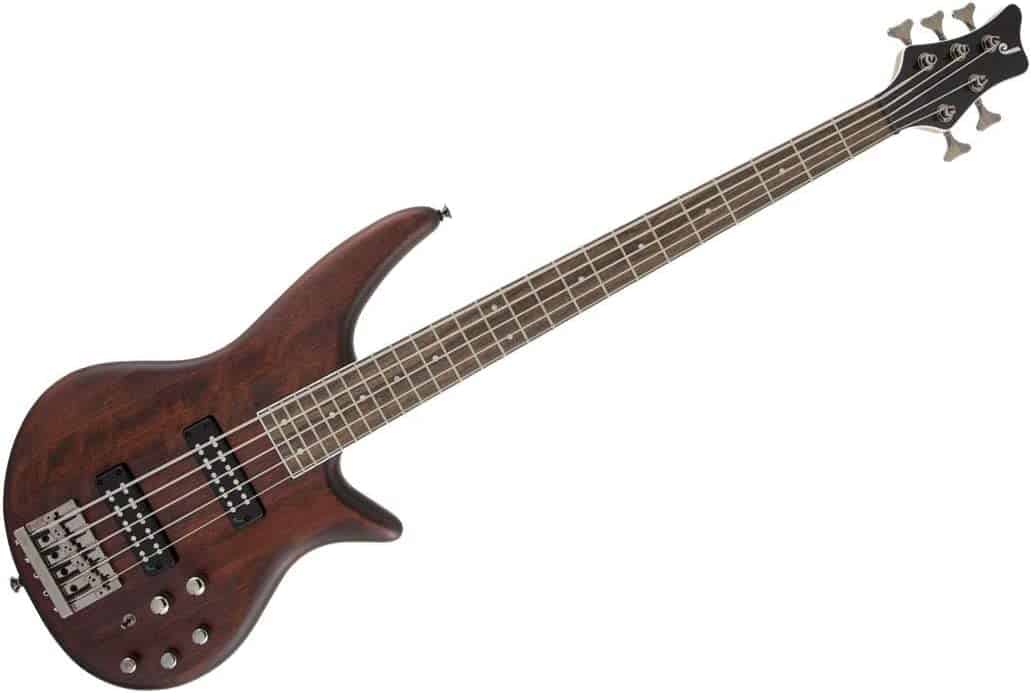Have you ever listened to a song and thought, “Wow, that bass guitar sounds amazing!”? As a fellow musician, I’m sure you have. But have you ever tried mixing your own bass guitar and just couldn’t get it to sound quite right? Trust me, we’ve all been there. That’s why I’m excited to share with you some insider tips from professional audio engineers on how to mix bass guitar perfectly.
In this article, we’ll cover everything from the basics of EQ and compression for bass guitar, different techniques for blending it with other instruments in the mix, and even some secrets from renowned producers on their go-to plug-ins and settings for a killer bass tone. Whether you’re recording your own music or looking to break into the world of audio engineering, these tips will take your bass mixing skills to the next level. So let’s get ready to rock that low end!
So, how to mix bass guitar?
Mixing bass guitar can be a tricky task, but with the right techniques and tips from professional audio engineers, you can achieve that perfect balance in your mix. The key to a great bass sound lies in understanding its role in the overall mix and using the right tools to enhance its presence without overpowering other elements.
Firstly, it’s important to start with a well-recorded bass track. This means capturing a clean signal without any clipping or unwanted noise. Once you have your raw recording, it’s time to focus on EQ (equalization). A common mistake is boosting too much low-end frequencies in an attempt to make the bass sound bigger. Instead, try cutting out some of those low frequencies that may clash with other instruments in the mix. Use a high-pass filter around 40-60 Hz to remove any unnecessary rumble.
Next, consider adding some compression to even out the dynamics of the bass track. This will help maintain consistency throughout the song and prevent any sudden jumps or drops in volume. Start with a moderate ratio and adjust accordingly until you find that sweet spot where the bass sits comfortably within the mix.
Another useful technique is parallel processing – duplicating your original bass track and applying different effects on each one before blending them together for added depth and character. For example, you could add distortion or saturation on one track while leaving the other clean for more definition.
Lastly, don’t underestimate how panning can affect your overall mix when it comes to mixing bass guitar. Experiment with panning your tracks slightly off-center rather than keeping everything centered for a wider stereo image.
In conclusion, mixing bass guitar perfectly requires careful attention to detail but also involves experimenting and trusting your ears. With these tips from professional audio engineers as guidance, you’ll be able to create an impactful and balanced low end that elevates your music production game.
Understanding the Basics of EQ and Compression for Bass Guitar
When diving into the world of bass guitar, two essential tools stand out: equalization (EQ) and compression. These audio effects shape how the bass fits within a mix, giving it character and presence. With EQ, think of it as sculpting sound; you can enhance or reduce certain frequency ranges to make your bass pop. For example, boosting the low frequencies around 60-100 Hz adds depth and warmth, while cutting higher frequencies can help eliminate unwanted muddiness. It’s all about creating space in your overall sound so that each instrument shines without overshadowing another.
On the other hand, compression works like a gentle hug for your notes. It evens out dynamic levels by reducing the volume of louder sounds while bringing up quieter ones. This is particularly helpful for maintaining consistency during performances or recordings where dynamics might otherwise become disruptive. When setting up your compressor for bass guitar, pay attention to attack and release times; a quicker attack helps keep tightness in fast passages, while a slower one allows notes to breathe more naturally. Striking a balance between these two techniques enables you to create a polished sound that complements any genre—whether it’s funk-infused grooves or heavy rock riffs!

Read also: what brand of guitar is the best
Exploring Techniques for Blending Bass with Other Instruments in the Mix
When it comes to creating a well-rounded mix, blending bass with other instruments can feel like an intriguing puzzle. The bass serves as the foundation of most musical compositions, providing depth and rhythm. One effective technique is to use sidechain compression. This method allows the kick drum to push the bass down slightly whenever it hits, creating space for both elements without feeling cluttered. Imagine how a wave ebbs and flows; that’s how sidechain works—giving your mix movement while maintaining clarity. Additionally, consider frequency separation: by ensuring each instrument occupies its unique sonic space in the frequency spectrum, you prevent muddiness and enhance overall sound quality.
Another valuable approach is layering different bass sounds together for richness. By using multiple types of bass, such as an electric guitar-like tone alongside a deep synth pad, you create a harmonious blend that adds complexity without overwhelming listeners. Moreover, employing EQ techniques can also greatly improve integration; cutting unwanted frequencies on other instruments allows your bass to shine through more clearly. As you experiment with panning—placing some elements slightly left or right—you foster a sense of balance in your mix that keeps things engaging and dynamic throughout the song’s progression.
This journey into mixing encourages creativity; every choice shapes how listeners experience music!
Secrets from Renowned Producers: Go-To Plug-ins and Settings for Killer Bass Tone
When it comes to crafting a killer bass tone, renowned producers often have their favorite plug-ins and settings that transform the ordinary into the extraordinary. A common choice is compression, which helps to even out dynamics, making every note punch through with clarity and warmth. For example, using a vintage-style compressor can add character while ensuring that softer notes don’t get lost in the mix. Then there’s equalization—sweeping through frequencies with precision allows producers to carve out space for each instrument in a track. By boosting the low-end around 60 Hz and cutting muddiness in the 300-400 Hz range, they can create a solid foundation for bass lines that feel both powerful and defined.
Another secret weapon in achieving stellar bass tone is saturation or distortion effects. This adds harmonic richness, giving bass lines an edge without overwhelming them. Producers might use plug-ins like tube emulators or analog-style saturators for this purpose; they can subtly warm up sound while introducing just enough grit to keep it engaging. Finally, layering different sounds is key—combining synthesized tones with recorded ones creates depth and complexity in music production.
Each of these tools contributes uniquely but works harmoniously together to ensure that when listeners hear the bass line, it resonates deeply within them.
Expanding Your Skills: Advanced Methods in Mixing Bass Guitar
When it comes to mixing bass guitar, the journey from novice to expert involves a treasure trove of techniques that can elevate your sound. One essential method is using equalization, which allows you to carve out space in the mix for your bass. By subtly boosting frequencies around 60-100 Hz, you create a warm foundation while cutting some higher frequencies helps avoid muddiness. Additionally, using a low-pass filter can ensure only those deep tones shine through without interference from other instruments. Experimenting with these adjustments gives life and clarity to your bass line.
Another powerful technique is applying compression. This tool smooths out dynamics by reducing the volume of loud sounds while amplifying quieter ones. When mixed properly, it adds sustain and punch to your playing style, making it feel more cohesive within the track. Consider setting a moderate attack time; this lets initial transients breathe while maintaining body in sustained notes. Also, make use of
- parallel compression
- sidechain techniques
—these approaches allow you to maintain harmony without sacrificing energy or presence in the music! Mixing bass guitar becomes an art form when exploring such advanced methods; each improvement reveals new layers in creativity and expression.
You may also like: beginner trombone books
Conclusion: Perfecting Your Approach to Mixing Bass Guitar.
When it comes to mixing bass guitar, the journey can be both exciting and challenging. The bass lays down the foundation of a song, filling in the low-end frequencies that give music its depth and rhythm. To achieve a well-balanced mix, it’s important to consider how the bass interacts with other instruments. Start by carefully choosing your EQ settings; cutting unnecessary high frequencies while enhancing lower ones can create clarity without muddiness. You might want to use a compressor as well, which helps control dynamics, ensuring that softer notes are audible while louder ones don’t overpower everything else.
Another key aspect is panning. While most bass guitars sit centrally in the mix for unity, sometimes experimenting with subtle panning can add an interesting layer to your soundscape when combined with harmonies or synths. Pay attention to reverb and delay too; too much can make your bass sound distant and unfocused! Instead, keep effects minimal—just enough to enhance without overwhelming. Finally, always trust your ears; mixing takes practice and patience! Recording multiple takes lets you choose what fits best within your track’s vibe.
By honing these techniques, you’ll not only improve your mixing skills but also elevate the overall quality of any musical project you embark on!

